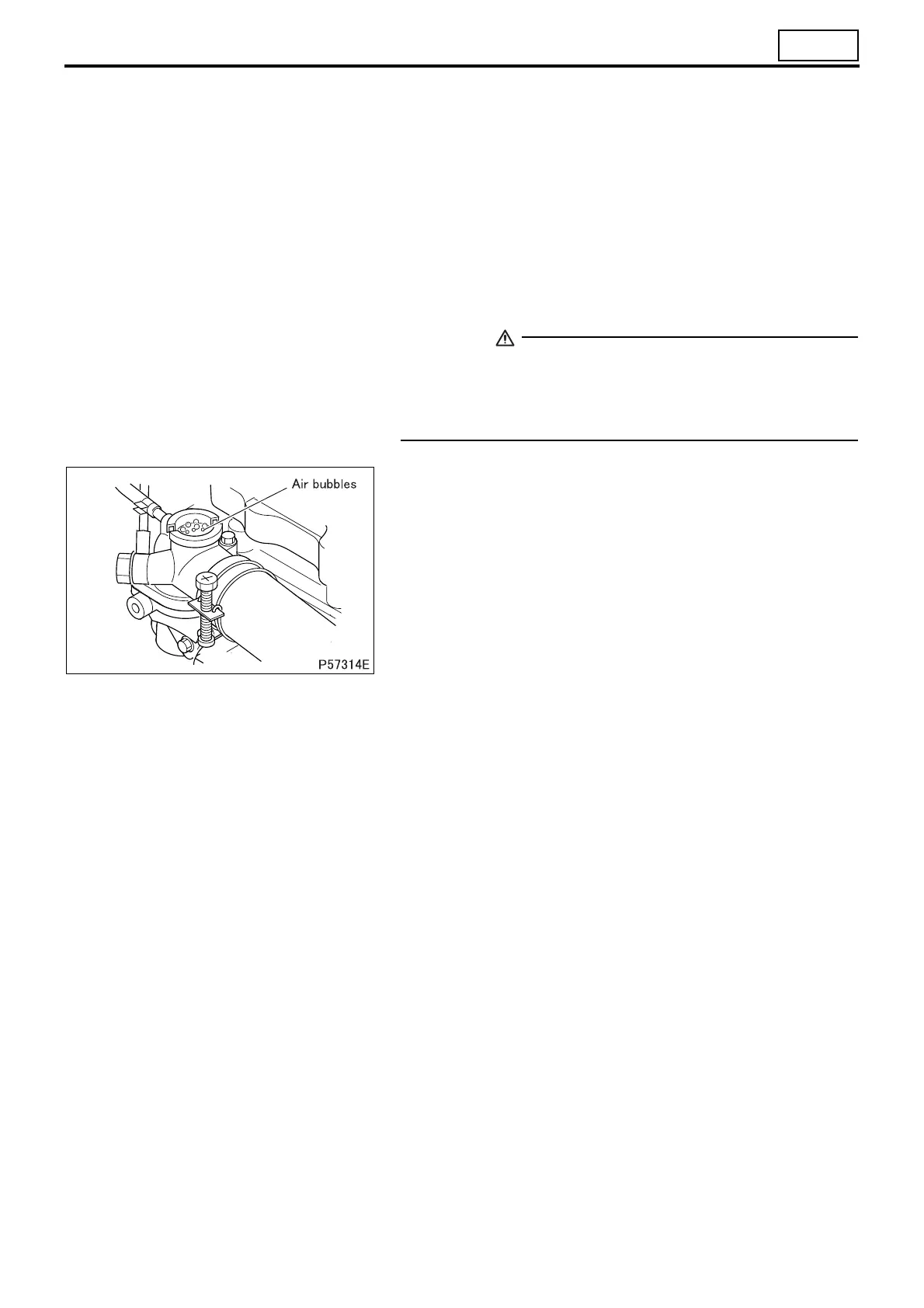14
14-15
4. Air Bleeding of Cooling System
• With the pressure cap removed and the coolant temperature at 90°C, let the engine idle in order to bleed air com-
pletely out of the cooling system.
• After air bleeding is completed, refill the reservoir tank with coolant as needed.
5. Air/Gas Leakage Test
• Presence of air or exhaust gas in coolant accelerates corrosion
of the cooling system components. To prevent this, carry out air/
gas leakage tests in accordance with the following procedure.
• Remove the pressure cap.
WARNING
• If the engine is hot, boiling coolant may spurt out from the
filler port when the pressure cap is loosened. To avoid a
scold, make sure to remove the pressure cap only when the
coolant is cold.
• Run the engine until the coolant temperature rises to approxi-
mately 90°C.
• If air bubbles appear continuously through the filler port, there is
air or exhaust gas penetrating into the cooling system.
• Presence of air in coolant can be an indication of loose cylinder
head bolts, loose water pump mounting bolts, loose hose con
-
nections, and/or a damaged hose.
• Presence of exhaust gas in coolant can be an indication of a
damaged cylinder head gasket and/or cracks in the cylinder
head.

